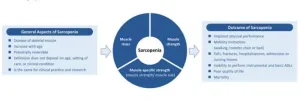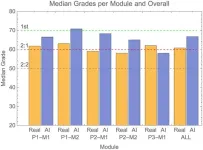EMBARGOED FOR RELEASE UNTIL 4 P.M. ET, WEDNESDAY, JUNE 26, 2024
MINNEAPOLIS – Moderate levels of physical activity and fitness may be linked to a reduced risk of amyotrophic lateral sclerosis (ALS) later in life, according to a new study published in the June 26, 2024, online issue of Neurology®, the medical journal of the American Academy of Neurology. The study only found an association between physical activity and risk of ALS in male participants, not female participants.
ALS is a rare, progressive neurodegenerative disease that affects nerve cells in the brain and the spinal cord. People with ALS lose the ability to initiate and control muscle movement, which often leads to total paralysis and death. The average life span after diagnosis is two to five years.
“The diagnosis of prominent athletes with ALS at young ages has sparked the uncomfortable idea that higher physical activity could be tied to developing ALS,” said study author Anders Myhre Vaage, MD, of Akershus University Hospital in Norway. “There have been conflicting findings on levels of physical activity, fitness and ALS risk. Our study found that for men, living a more active lifestyle could be linked to a reduced risk of ALS more than 30 years later.”
For the study, researchers looked at 373,696 people in Norway with an average age of 41. They were followed for an average of 27 years.
Of the total participants, 504 people developed ALS. Of those who developed ALS, 59% were male participants.
Participants recorded their level of physical activity for the past year into one of four categories: sedentary; a minimum of four hours per week of walking or cycling; a minimum of four hours per week of recreational sports or heavy gardening; or participation in hard training or sports competitions regularly, several times a week. Due to few participants with the highest level of physical activity, researchers combined the third and fourth categories into one high activity group.
Researchers found that of the 41,898 male participants that had the highest level of physical activity, 63 developed ALS; of the 76,769 male participants with the intermediate level of physical activity, 131 developed ALS; and of the 29,468 male participants with the lowest level of physical activity, 68 developed ALS.
After adjusting for other factors that could affect the risk of ALS, such as smoking and body mass index, researchers found that for male participants, when compared to those with the lowest level of physical activity, those with moderate levels of physical activity had a 29% lower risk of ALS and those with high levels of physical activity had a 41% lower risk of ALS.
Researchers also looked at resting heart rate. Men in the lowest of four categories of resting heart rate, which indicates good physical fitness, had a 32% reduced risk of ALS compared to those with higher resting heart rates.
“Our findings show that, for men, not only do moderate to high levels of physical activity and fitness not increase the risk of ALS, but that it may be protective against the disease,” Myhre Vaage said. “Future studies of the connection between ALS and exercise are needed to consider sex differences and higher or professional athlete physical activity levels.”
A limitation of the study was that the physical activity questionnaire was completed only at one specific time during the study, so it may not have captured the participants’ exercise levels over the nearly 30-year span of the study.
Learn more about ALS at BrainandLife.org, home of the American Academy of Neurology’s free patient and caregiver magazine focused on the intersection of neurologic disease and brain health. Follow Brain & Life® on Facebook, X and Instagram.
When posting to social media channels about this research, we encourage you to use the hashtags #Neurology and #AANscience.
The American Academy of Neurology is the world's largest association of neurologists and neuroscience professionals, with over 40,000 members. The AAN’s mission is to enhance member career fulfillment and promote brain health for all. A neurologist is a doctor with specialized training in diagnosing, treating and managing disorders of the brain and nervous system such as Alzheimer's disease, stroke, concussion, epilepsy, Parkinson's disease, multiple sclerosis, headache and migraine.
For more information about the American Academy of Neurology, visit AAN.com or find us on Facebook, X, Instagram, LinkedIn and YouTube.
END
Do people who exercise more have a lower risk of ALS?
2024-06-26
(Press-News.org)
ELSE PRESS RELEASES FROM THIS DATE:
Could preventative drug be effective in people with migraine and rebound headache?
2024-06-26
EMBARGOED FOR RELEASE UNTIL 4 P.M. ET, WEDNESDAY, JUNE 26, 2024
MINNEAPOLIS – A drug used to prevent migraine may also be effective in people with migraine who experience rebound headaches, according to a new study published in the June 26, 2024, online issue of Neurology®, the medical journal of the American Academy of Neurology.
People with chronic migraine who overused pain medication had fewer monthly migraine and headache days and fewer days using pain medication when taking the migraine prevention drug atogepant.
“There is a high prevalence of pain medication ...
Pathologists awarded grant from American Society of Hematology
2024-06-26
Dr. Zhen Mei, a clinical pathologist, and Dr. Vivian Chang, a pediatric hematologist-oncologist, both at UCLA Health, have been awarded $30,000 from the American Society of Hematology to revise blood cell ranges for people with Duffy-null Associated Neutrophil Count, which is also known as Duffy-negative.
Those who are Duffy-negative, estimated to be two out of three people identifying as Black in the U.S., lack Duffy antigens on the surface of their red blood cells as a mechanism to resist malaria. This helps provide protection but ...
Revolutionizing ovarian cancer treatment with adaptive PARP inhibitor therapy
2024-06-26
TAMPA, Fla. — Ovarian cancer, often diagnosed at an advanced stage, presents significant treatment challenges because patients tend to develop resistance to conventional therapies quickly. Despite aggressive treatment, recurrence rates remain high, and managing this disease effectively requires innovative approaches. Poly-adenosine ribose polymerase (PARP) inhibitors have emerged as a treatment option, targeting specific DNA repair mechanisms in cancer cells. However, their use is often limited ...
Global consensus for sarcopenia
2024-06-26
“[...] the development of a global conceptual definition of sarcopenia signifies a new dawn for this muscle disease.”
BUFFALO, NY- June 26, 2024 – A new editorial paper was published in Aging (listed by MEDLINE/PubMed as "Aging (Albany NY)" and "Aging-US" by Web of Science) Volume 16, Issue 11, entitled, “Global consensus for sarcopenia.”
In this new editorial, researchers Ben Kirk, Peggy M. Cawthon, and Alfonso J. Cruz-Jentoft from the University of Melbourne and Western Health discuss the global societal issue of skeletal muscle loss and weakness, termed Sarcopenia. Low muscle ...
Ocean’s loss of oxygen caused massive Jurassic extinction. Could it happen again?
2024-06-26
DURHAM, NC – Researchers have discovered a clue in Italian limestone that helps explain a mass extinction of marine life millions of years ago, and may provide warnings about how oxygen depletion and climate change could impact today’s oceans.
“This event, and events like it, are the best analogs we have in Earth's past for what is to come in the next decades and centuries,” said Michael A. Kipp, an earth and climate science assistant professor at Duke University. Kipp co-authored a study published June 24 in the Proceedings of the National Academy of Sciences that measures oxygen loss ...
Shocked quartz reveals evidence of historical cosmic airburst
2024-06-26
(Santa Barbara, Calif.) — Researchers continue to expand the case for the Younger Dryas Impact hypothesis. The idea proposes that a fragmented comet smashed into the Earth’s atmosphere 12,800 years ago, causing a widespread climatic shift that, among other things, led to the abrupt reversal of the Earth’s warming trend and into an anomalous near-glacial period called the Younger Dryas.
Now, UC Santa Barbara emeritus professor James Kennett and colleagues report the presence of proxies associated with the cosmic airburst ...
Chemotherapy disrupts gut microbiome in patients with breast cancer
2024-06-26
COLUMBUS, Ohio – Chemotherapy is known to cause behavioral side effects, including cognitive decline. Notably, the gut microbiome communicates with the brain to affect behavior, including cognition.
“For the first time ever, our Intelligut Study found that the gut microbiome has been implicated in cognitive side effects of chemotherapy in humans,” said senior author Leah Pyter, associate professor of psychiatry and neuroscience with The Ohio State University Wexner Medical Center and College of Medicine. ...
Microrobot-packed pill shows promise for treating inflammatory bowel disease in mice
2024-06-26
Engineers at the University of California San Diego have developed a pill that releases microscopic robots, or microrobots, into the colon to treat inflammatory bowel disease (IBD). The experimental treatment, given orally, has shown success in mice. It significantly reduced IBD symptoms and promoted the healing of damaged colon tissue without causing toxic side effects.
The study was published June 26 in Science Robotics.
IBD, an autoimmune disorder characterized by chronic inflammation of the gut, ...
Sharing false political information on social media may be associated with positive schizotypy
2024-06-26
Sharing false political information on social media by users may be associated with aspects of personality such as positive schizotypy, a set of traits including paranoia, suspicion and disrupted thinking patterns. It may also be linked to a motivation to increase awareness according to a study published June 26, 2024 in the open-access journal PLOS ONE by Tom Buchanan, University of Westminster, UK, and colleagues.
The spread of false political information on social media can tarnish trust in authentic news and even contribute to social unrest. Knowingly or not, a small portion of social media users actively share false material.
Buchanan and ...
AI-generated exam submissions evade detection at reputable UK university
2024-06-26
In a test of the examinations system of the University of Reading in the UK, artificial intelligence (AI)-generated submissions went almost entirely undetected, and these fake answers tended to receive higher grades than those achieved by real students. Peter Scarfe of the University of Reading and colleagues present these findings in the open-access journal PLOS ONE on June 26.
In recent years, AI tools such as ChatGPT have become more advanced and widespread, leading to concerns about students using them to cheat by submitting AI-generated work as their own. Such concerns are heightened ...





